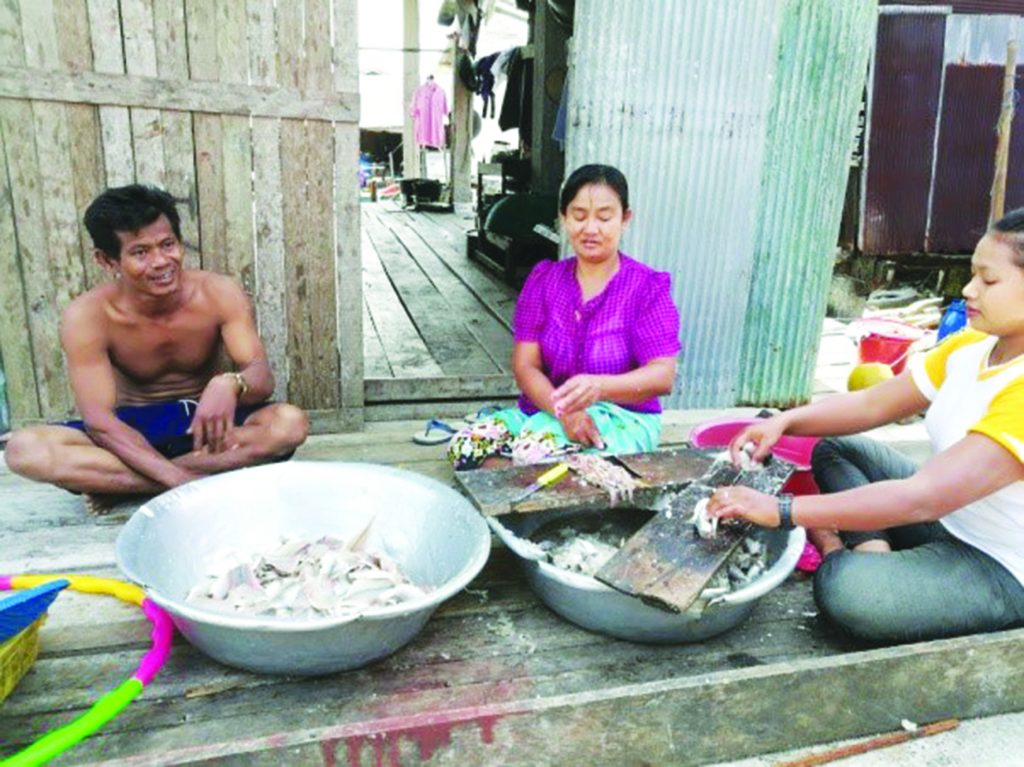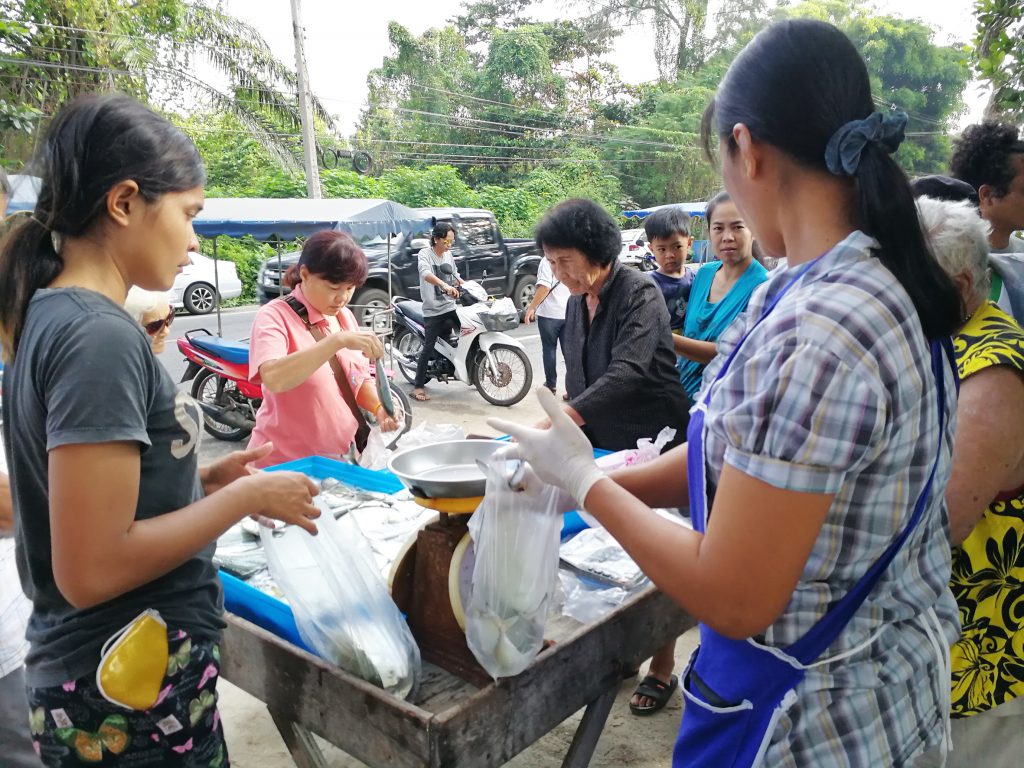Recent case studies in Cambodia, Myanmar and Thailand explored women’s roles in the fisheries value chain
By Jariya Sornkliang (jariya@seafdec.org), Fisheries Management Scientist, Southeast Asian Fisheries Development Center, Thailand
Women’s contributions in the fisheries value chain are not well recognised, even though there are many tasks in the fisheries value chain involving women. To show how important the women involved in fisheries are, gender analysis on women and men’s roles in fisheries is crucial. Gender analysis reveals context in a fishing community and promotes gender integration and responsiveness in fisheries development plans.
In the period 2017-2018, the Southeast Asian Fisheries Development Center (SEAFDEC), supported by the Government of Sweden and in partnership with the Mangroves for the Future project under the International Union for Conservation of Nature (IUCN/MFF) as well as the Stockholm Environment Institute (SEI), conducted an important regional gender study in South and Southeast Asia. SEAFDEC selected the study sites in three areas, namely, Kep in Cambodia, Kawthaung in Myanmar, and Trat in Thailand. The study aimed to understand the state of women and men in the fisheries value chain of each study site. The study brought to light several interesting findings with respect to women and men’s roles in the fisheries value chains in each of the three study sites.

At Okra Sa and Thmey Villages, Kep Province (Cambodia), both women and men were involved in various fisheries activities. While men ventured to sea for fishing, women supported fisheries with onshore activities such as cleaning nets and vessels, cleaning, segregating processing and marketing the catch.
In Pu Lone Tone Tone, Kawthaung (Myanmar), women prepared food to supply men who conducted the fishing activities on board seagoing vessels and also maintained the fishing gear and the vessel. No women worked onboard the vessels at sea. The reason appeared to be due to the long periods involved in such fishing operations, ranging from a week to even a month at sea. Later, the catch would be unloaded and transported, with women responsible for the sorting, processing and selling of the fish.
In Mairoot Sub-district, Klong Yai, Trat Province (Thailand), husbands and wives participated in the fishing activities together because the fishing ground was not too far from their houses. They shared several activities together from cleaning and mending fishing gear, fish sorting on land, processing, and selling products to the middleman. However, only women prepared the food for onboard operations. There was no activity that men did alone in the Thai case study.
During the COVID-19 pandemic in 2020, SEAFDEC conducted a rapid study on the impacts of the pandemic. The results found that many women became jobless and lost their incomes from shore-based activities because of the limited fishing periods in some areas or, in other areas, from markets closing during the pandemic. Online business platforms have become a significant adaptation of the family businesses to help them cope with the pandemic. Online business was mainly facilitated by women or younger family members and increased the interaction between family members.
Women take part in all the activities and processes of the fisheries value chain. However, women’s roles are dominant in gear mending and cleaning, catch segregating, product processing, and marketing. Based on our findings, both men and women are involved in all the fisheries value chains. That is, we did not come across even one value chain in which all the workers were of one gender only. However, equal participation of men and women in terms of access and rights is still a distant dream.

The effect of the COVID-19 pandemic shows that women have high adaptation and resilience even under challenging pandemic circumstances. Therefore, women should be the target of focused efforts to develop human capacity in development programmes, such as by empowering women to generate and increase their fisheries incomes. Along with support for a greater economic role, women’s attention to conservation also should be reconsidered so that they can help strengthen the sustainable utilisation of fishery resources.
In conclusion, fishery policymakers are required to better recognise the diverse roles and perspectives of men and women in fisheries to achieve equitable outcomes and livelihood sustainability goals in fishing communities. A key recommendation of this study, which was carried out before and after the pandemic, is better documentation of women’s roles through the collection of sex-disaggregated data and through gender analyses of women’s and men’s roles in value chains. This will support fisheries project managers to plan realistic development programmes in fisheries management based on gender roles and needs. It will lead to more gender-sensitive and gender-responsive projects towards gender equity and equality in the fishing community.
Cutting fish for processing in Myanmar. Women’s contributions in the fisheries value chain are not well recognised, even though there are many tasks in the fisheries value chain involving women
Street fish sale, Thailand. Fishery policymakers are required to better recognise the diverse roles and perspectives of men and women in fisheries to achieve equitable outcomes and livelihood sustainability goals in fishing communities
The effect of the COVID-19 pandemic shows that women have high adaptation and resilience even under challenging pandemic circumstances